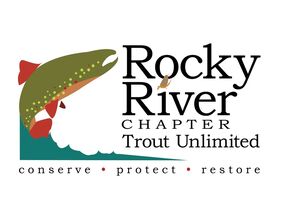Rod Building - Graphite
John Benbow, Steve Craig, Nick Mermigas and many others within the Chapter build their own graphite fly rods by starting with a graphite blank and shopping for the components they prefer to have in their personal custom built fly rod.
Fritz...
Rod Building - Bamboo
Richard Teeter, TIm Wilhelm and others within the Chapter have been building "cane rods" for a number of years.
Tim Wilhelm is one of our resident experts on building a bamboo fly rod. We are looking foward to learning more from Tim on this webpage.
Tim...
Tim Wilhelm is one of our resident experts on building a bamboo fly rod. We are looking foward to learning more from Tim on this webpage.
Tim...
(from) The Rod Project 08.12
It should be simple. The Sir D is a 7 foot rod so each section would be 3 ½ foot long (42 inches). A culm of bamboo is 12 foot long so cut it in half and let’s get on with it. Well it’s not that simple. If you have spent any time looking at bamboo you know that every so often there is a node and nodes aren’t evenly spaced on a culm. They may be 10 to 12 inches apart at the butt or bottom end of the culm and 14 to 17 inches apart at the tip end. In a bundle of 20 culms, it is very possible that you won’t find any 2 culms that have the same node spacing. Nodes are weak spots and the rule of thumb is you don’t want to have one within 5 inches of the tip or the ferrule. You also want to stagger them to prevent any two adjacent strips from having nodes at the same location. There are a number of staggering options but the most common are 2 x 2 x 2 and 3 x 3. In a 2 x 2 x 2 stagger nodes are arranged so that two nodes are placed on strips on opposite sides of the rod then a couple inches away you’ll have 2 more nodes and then the last 2 are beyond that. Sketch #1 should give you an idea of how that is done. So staggering the nodes causes waste and a 2 x 2 x 2 that has the nodes spaced at 3 inches means you have to start with strips that are 6 inches longer than what you need. But that’s not all you need a little bit of excess at either end to give you something to hang on to and to allow for areas. Our 42 inch strip is now 50 inches with the addition of 6 inches for node spacing and 2 extra inches (leeway) as insurance so we need to find a culm that will work the best when cut like the culm as shown in Sketch #2. It really is a case of measure twice, cut once at this point but by starting with a 2 x 2 x 2 spacing you can switch to 3 x 3 if your strips are too short if you find yourself with strips that are too short.
- Tim Wilhelm
It should be simple. The Sir D is a 7 foot rod so each section would be 3 ½ foot long (42 inches). A culm of bamboo is 12 foot long so cut it in half and let’s get on with it. Well it’s not that simple. If you have spent any time looking at bamboo you know that every so often there is a node and nodes aren’t evenly spaced on a culm. They may be 10 to 12 inches apart at the butt or bottom end of the culm and 14 to 17 inches apart at the tip end. In a bundle of 20 culms, it is very possible that you won’t find any 2 culms that have the same node spacing. Nodes are weak spots and the rule of thumb is you don’t want to have one within 5 inches of the tip or the ferrule. You also want to stagger them to prevent any two adjacent strips from having nodes at the same location. There are a number of staggering options but the most common are 2 x 2 x 2 and 3 x 3. In a 2 x 2 x 2 stagger nodes are arranged so that two nodes are placed on strips on opposite sides of the rod then a couple inches away you’ll have 2 more nodes and then the last 2 are beyond that. Sketch #1 should give you an idea of how that is done. So staggering the nodes causes waste and a 2 x 2 x 2 that has the nodes spaced at 3 inches means you have to start with strips that are 6 inches longer than what you need. But that’s not all you need a little bit of excess at either end to give you something to hang on to and to allow for areas. Our 42 inch strip is now 50 inches with the addition of 6 inches for node spacing and 2 extra inches (leeway) as insurance so we need to find a culm that will work the best when cut like the culm as shown in Sketch #2. It really is a case of measure twice, cut once at this point but by starting with a 2 x 2 x 2 spacing you can switch to 3 x 3 if your strips are too short if you find yourself with strips that are too short.
- Tim Wilhelm
_________________________________________________________________________________________________________________________________________________________________
Rocky River Chapter of Trout Unlimited (c) 2014
Rocky River Chapter of Trout Unlimited (c) 2014

